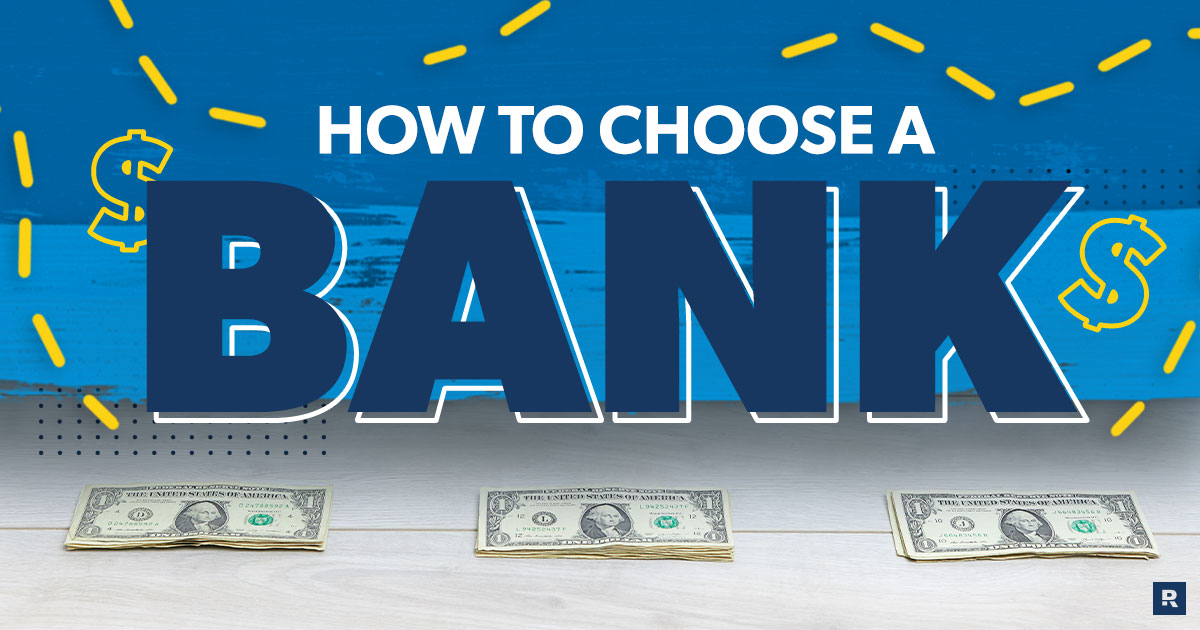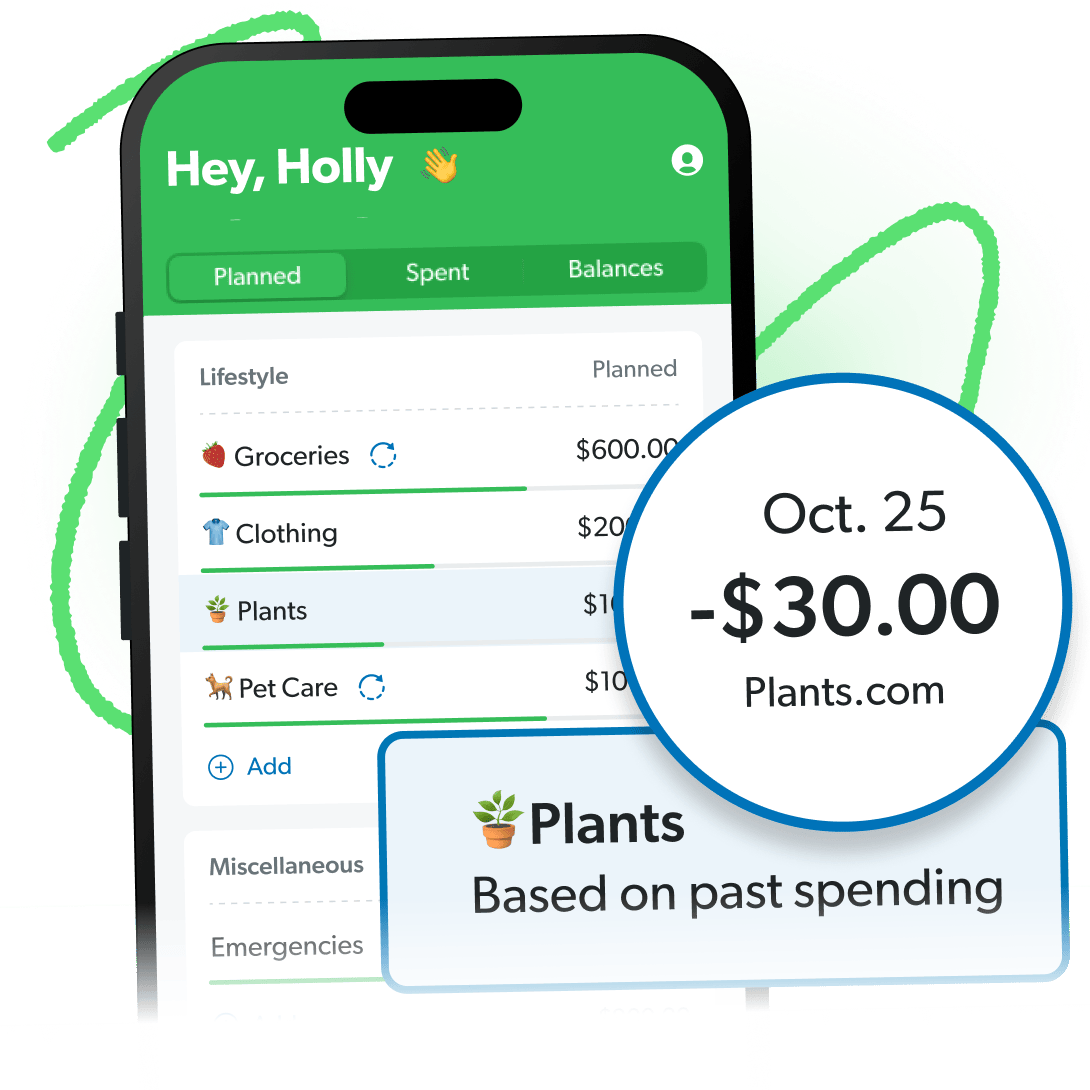Finding a bank isn’t something most people give much thought. They just need a place to park their money and get to it when they need it quickly. In fact, some people just stick with the bank their parents (or even grandparents). But it doesn’t matter, you might be thinking. All banks offer pretty much the same features, so it doesn’t matter which one you choose, right?
Hang on! Not every bank is created equal. It’s time to do your homework to find the one that’s right for you. Yes, we know . . . it’s not the most fun thing to do in the world. But it’s the only way you’ll avoid paying up the wazoo in fees, charges and other costs that drain money out of your wallet.
Get expert money advice to reach your money goals faster!
So how do you find a bank? Flip a coin? Rock-Paper-Scissors? You need to be more intentional than that. The two things you really need to narrow down when choosing a bank are 1) what kind of bank you want and 2) the features that matter the most to you.
So here’s what to look for.
How to Choose a Bank
You’ll want to start with the basics, like a checking account for your regular spending and banking. And you’ll need a savings account where you’ll keep your emergency fund and money you’re saving for other goals. But you may also want the option to put money in a money market account that offers different features.
Some banks also offer interest-earning checking accounts or rewards checking accounts. It just takes a little research (the internet is a wonderful thing) to find out which banks will give you the best options and rates before you open an account.
More Margin Means More Money in the Bank
In just minutes, the EveryDollar budgeting app helps you find margin you didn’t know you had—you’ll feel like you got an instant raise!
Here are some helpful steps to follow as you’re looking for a bank:
1. Choose a bank type.
When it comes to the actual place where you’ll park your money, you have three basic options:
Traditional Bank
You’ve seen these on the corner of every big city and small town in America. With a traditional bank, you can choose a big national bank or a smaller community option.
Honestly, there’s no upside to the massive name-brand banks unless you enjoy being treated like a nameless, faceless account number. On the other hand, a smaller community bank will often give you great customer service, and you get to know the people who are handling your money. What a concept!
Credit Union
These are like traditional banks with a few big differences. Credit unions are nonprofit organizations—meaning they don’t have shareholders looking for a return on their investment. That allows credit unions to focus on serving their members.
Usually, credit union membership is based on certain criteria, like being a teacher, working for a certain company, or serving in the military. They usually have fewer branches and ATMs, but they typically have fewer fees and pay higher interest rates on your money (and that’s good for your bottom line).
Online Bank
This is the new kid on the block, especially neobanks. With this option, all your accounts and everything else happens digitally—deposits, transfers, bill payments and savings. It’s all super convenient! (Unless you plan to deposit cash a lot—in which case, you’re probably going to want a bank with a physical location.)
And not having physical branches means more savings and perks for customers. But that also means there’s not a lot of face-to-face human interaction (which probably makes all the introverts out there super happy).
Customer service with online banking is usually done entirely on the phone or via email or live chat, free from the limits of brick-and-mortar locations and regular bank hours. (Though, nowadays, most traditional banks and credit unions have those customer service features as well).
2. Check the interest rates.
You should definitely be interested in a bank’s interest rates. This is the interest you earn in checking, savings, certificates of deposit, money market accounts—pretty much any account where the bank uses your money and pays you a little somethin’ somethin’ for the privilege.
Banks and credit unions usually advertise their rates online. And online banks often offer better rates because they don’t carry the costs of having a brick-and-mortar bank in every town. We’re not talking big numbers here, but you still need to do the research. Go ahead and start by weeding out the ones with lower rates.
Lots of banks will use special interest rates or introductory offers to get new customers, but those rates may not last forever, so read the fine print (even if you have to squint a little).
3. Look for low or no fees.
Doesn’t the word fee just make you shudder? Bank fees can bleed you dry, so find out how much banks charge in ATM fees, overdraft fees, foreign transaction fees, card replacement fees, and any other fees they can dream up.
A lot of banks and credit unions offer free checking, which means they won’t hit you with minimum balance charges or monthly maintenance fees. But be careful of the ol’ bait and switch. You may get introductory freebies for a while, then get chained to higher fees later (dun-dun-dunnn).
4. Find out the number of ATMs and branches.
Many banks slap you with fees for using an ATM from another bank. If you love using your ATM to pull out some cash for your envelope system, make sure you have a good network that won’t charge you fees. If your bank or credit union has several branches, that ups your chances of having convenient, fee-free ATMs nearby.
5. See if it has mobile or online banking.
Having a user-friendly website and mobile banking app that work together is a game-changer when it comes to convenience. With a good online bank, you’ll be able to transfer money, view your accounts, make payments, and make mobile deposits. Some sites and apps even include an ATM finder and offer text alerts when your balance is low.
6. Consider the convenience factor.
Choose a bank or credit union you actually enjoy doing business with. If you have to spend a lot of time and effort getting answers about a particular bank (who has time for that?), then you need to go somewhere else. And if they don’t have an online presence, you can be pretty sure most of their other systems will be outdated too.
You also need to know if a bank has good customer service. You can check online reviews, but take those with a grain of salt. Internet trolls are hiding everywhere! The best way to find out about a bank is word of mouth. Just ask friends and colleagues where they bank and if they’ve had good experiences. And if you can contact your bank in multiple ways (phone, email, text, social media, online chat), then you know that bank is making an effort to take care of its people.
7. Make sure the bank is secure.
In today’s hack-happy world, you can’t be too careful when it comes to protecting your money and personal information. The other features on this list won’t matter if a middle schooler can hack into your bank. So if a bank or credit union has wimpy security, that’s a red flag.
You’ll also want to make sure your money is insured. Most banks and credit unions are insured by the Federal Deposit Insurance Corporation (FDIC) or the National Credit Union Administration (NCUA). Both will cover accounts up to $250,000. That means if the bank goes belly-up, your money will be safe. Bottom line: If a bank or credit union isn’t insured, don’t give them your money!
Choose Wisely
Now it’s time for you to choose which bank best fits your needs. Like we said earlier, your financial future mostly depends on you and the choices you make—even if those choices feel like they don’t matter. Being responsible with money takes some intentionality on your part, so be sure to do your homework and take the time to understand your needs and goals. It might mean the difference between a bank that treats you right and one that nickels-and-dimes you with unnecessary fees.
And if the bank you choose doesn’t live up to your expectations—whether it’s next month or five years down the road—you can always find a better bank. Remember, you’re the customer, and their job is to make you happy.
Now, if you want your banking experience to be an even happier one, check out EveryDollar—a budgeting app that helps you control where your money goes each month.
EveryDollar helps you find extra margin every month so you can start making real money progress, really fast. Start EveryDollar for free right now!




